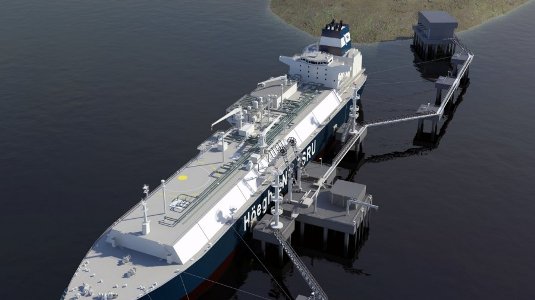Global Storage Growth Slows Down: Cedigaz
Global underground gas storage (UGS) capacity is expected to rise by 1.4%-2.2% annually over the next two decades, a slower rate of growth than the 2.6% annually over the previous two decades, according to Cedigaz.
That will result in somewhere between 547bn m³ and 640bn m³ of total capacity by 2035, compared with 413bn m³ today, and will cost between €100bn and €170bn, the French consultancy says in a new report. New storage markets in Asia-Oceania, the Middle East and potentially Central and South America will account for most of the growth expected by 2035.
The lower growth rate reflects the maturity of the storage market in the main regions. The range of future additions to storage capacity is also much larger than foreseen in past surveys by Cedigaz, owing to uncertainty over the availability of appropriate geology, economic and financial constraints, and competition with alternative sources of flexibility in the new storage regions, such as LNG imports which can substitute for storage as peak supply.

The Hoegh-owned 'Independence' FSRU offshore Lithuania (Credit: Litgas)
Many storage projects, planned for years, have not materialised and several countries – mostly in south Asia, southeast Asia and Central and South America – have chosen to build LNG regasification terminals instead to provide their flexibility needs.
In countries where the gas industry is still in its early days, storage projects are mainly linked to seasonal and peak balancing needs, optimisation of the main long distance gas transmission pipelines and security of supply. Large volumes are needed but so too is peak deliverability to cope with increasing demand.
Conversely, in mature markets – North America, most of Europe, and the former Soviet Union – the growth in working capacity is limited, and could even be negative. Some plants in the European Union are being mothballed as the economics work against them. In the liberalised markets, the gas industry has undergone massive changes, largely impacting storage activity which is increasingly geared to trading and managing gas price fluctuations.
New storage needs are linked to the development of trading activity and to the use of natural gas as a back‐up of intermittent renewable energy in the power sector. The focus is on increasing peak deliverability rather than storage volumes.
The number of LNG importing countries has expanded significantly over the past ten years from 18 in 2005 to 35 in 2015. A wider range of LNG supply options, flexible shipping strategies, the growth of the spot and short-term market and floating storage and regasification (FSR) technology, have helped a growing number of countries to become LNG importers.
This includes traditionally export-oriented regions, such as the Middle East and North Africa, which are facing burgeoning gas demand, emerging economies with growing energy needs in southeast Asia and Central and South America, and countries seeking greater energy security and diversification.
The global regasification market has expanded at a strong rate, having more than doubled in the past ten years, with capacity growth coming from new and ‘traditional’ importers alike. The FSR technology has enabled new countries to secure an accelerated access to the global LNG market, while existing importers have often focused on bringing online larger terminals with increased send-out, berthing and storage capacity. As of beginning of 2016, 118 LNG import terminals – including 17 FSRUs – existed worldwide. Global import capacity stood at 1,000bn m³/year at the beginning of 2016. In 2015 alone, 11 new terminals, five of which are FSRUs and two expansions of existing plants came online.
With a global share of 54%, Asia is the number one region for regasification capacity. However, its dominance has decreased notably since 2005 when it accounted for 65% of global regasification infrastructure. Such a decrease highlights the steady emergence of new LNG consumers. This trend is expected to continue going forward with 20 new countries planning to add LNG import capacities. There are 16 new terminals under construction, of which four FSRUs. In addition, 12 terminals are being expanded.
These projects will add a combined capacity of over 100bn m³/year by 2018/19. In addition, there are more than 100 potential and speculative projects (expansions and new terminals) adding almost 600bn m³/year of import capacity worldwide. Asia-Oceania drives the expansion, home to three quarters of the current capacity under construction and half of the planned capacity, but new LNG importing countries are entering the LNG market.
The FSRU technology facilitates this trend thanks to the lower cost of FSRUs compared with traditional onshore plants, their shorter lead time and less difficult permitting. At the beginning of 2016, there were 17 FSRUs in operation globally. Floating import capacity was 88bn m³/year, accounting for about 9% of the world’s total. In 2015 alone, five FSRUs came online and four additional FSRUs are set to start operations in 2016 and 2017.
With 41 FSRU projects under consideration globally, both the volume (a combined capacity of 145bn m³/year) and share of FSRU capacity are likely to increase further. Asia still dominates the planned and announced FSRUs projects. However, 40% of the additional capacity is outside Asia. FSRUs are particularly popular in Central and South America, Europe and Africa.
William Powell


